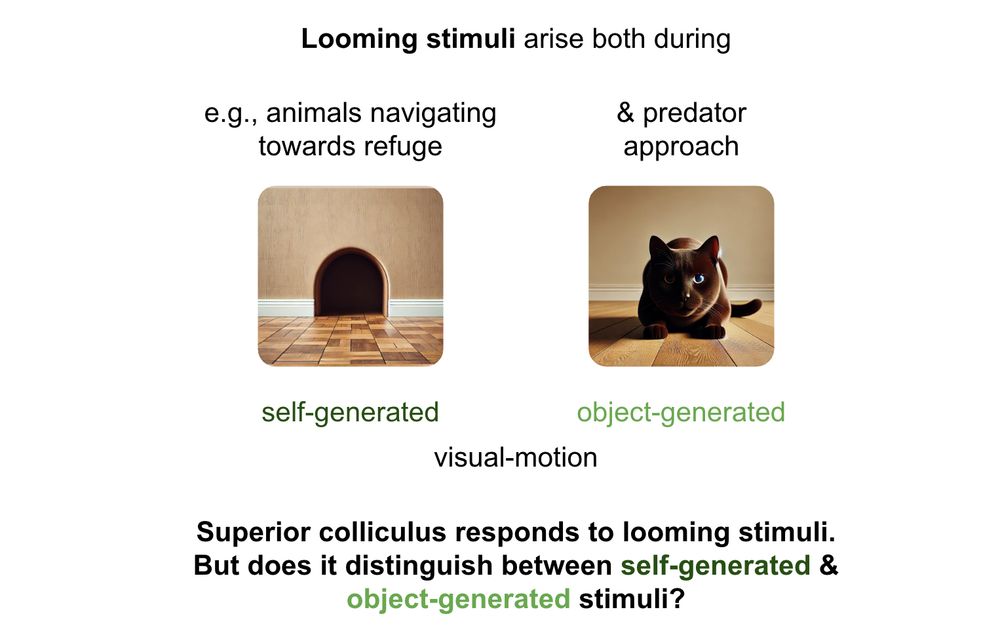
The lab has up to *3 postdoc openings* for comp systems neuroscientists interested in describing and manipulating neural population dynamics mediating behaviour
This is part of a collaborative ARIA grant "4D precision control of cortical dynamics"
euraxess.ec.europa.eu/jobs/383909

The lab has up to *3 postdoc openings* for comp systems neuroscientists interested in describing and manipulating neural population dynamics mediating behaviour
This is part of a collaborative ARIA grant "4D precision control of cortical dynamics"
euraxess.ec.europa.eu/jobs/383909
With @amansaleem.bsky.social
Thread below👇
www.biorxiv.org/content/10.1...

With @amansaleem.bsky.social
Thread below👇
www.biorxiv.org/content/10.1...
How do mice distinguish self-generated vs. object-generated looming stimuli? Our new study combines VR and neural recordings from superior colliculus (SC) 🧠🐭 to explore this question.
Check out our preprint doi.org/10.1101/2024... 🧵

How do mice distinguish self-generated vs. object-generated looming stimuli? Our new study combines VR and neural recordings from superior colliculus (SC) 🧠🐭 to explore this question.
Check out our preprint doi.org/10.1101/2024... 🧵

